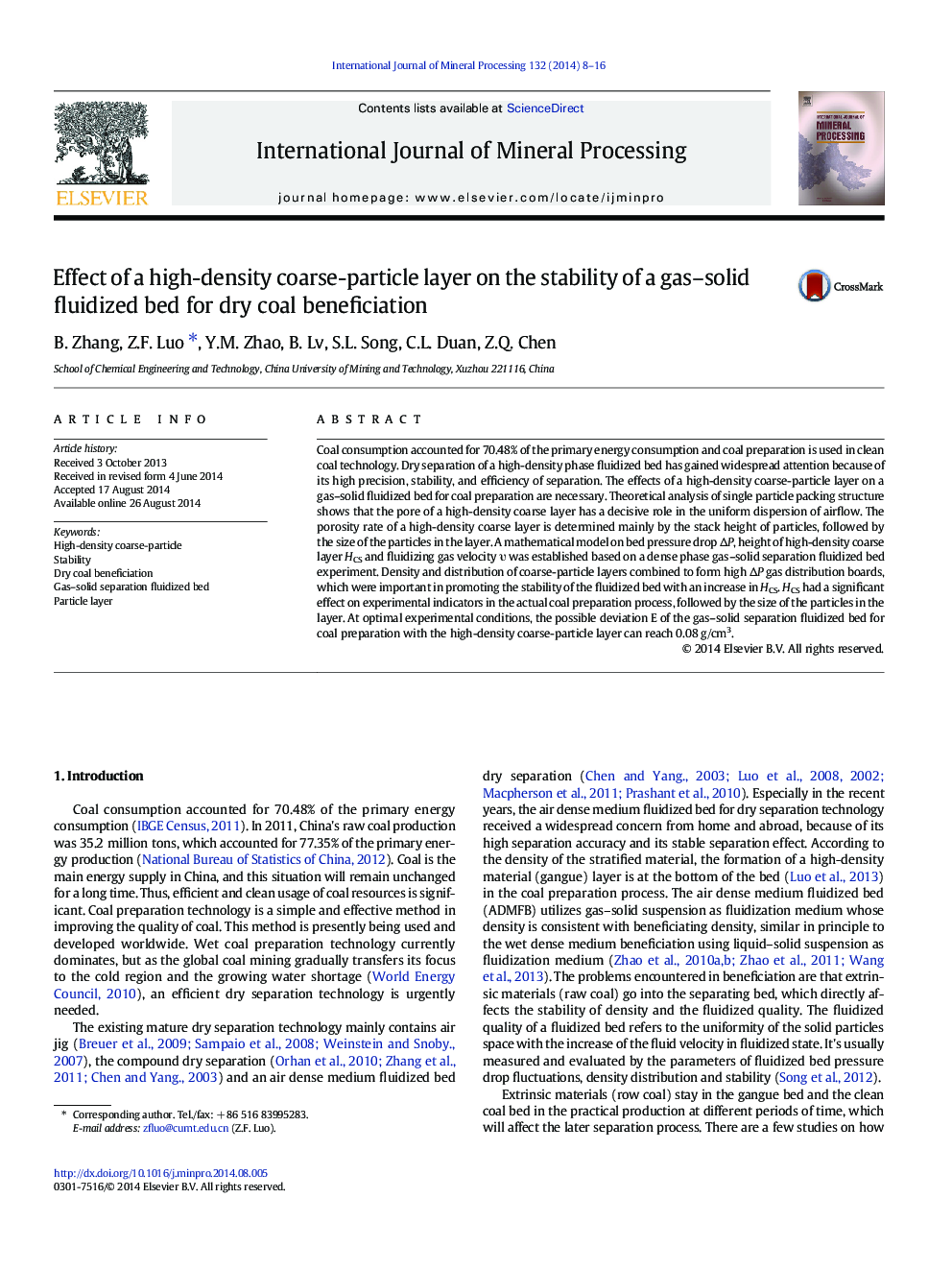| Article ID | Journal | Published Year | Pages | File Type |
|---|---|---|---|---|
| 213919 | International Journal of Mineral Processing | 2014 | 9 Pages |
•Effect of a high-density coarse-particle layer on the stability of the fluidized bed.•Mathematical model for bed pressure drop, layer height and fluidized gas velocity.•Pore determinant is mainly stack height, and secondly particle fraction.•E value of gas–solid fluidized separation bed with gangue layer reaches 0.08 g/cm3.
Coal consumption accounted for 70.48% of the primary energy consumption and coal preparation is used in clean coal technology. Dry separation of a high-density phase fluidized bed has gained widespread attention because of its high precision, stability, and efficiency of separation. The effects of a high-density coarse-particle layer on a gas–solid fluidized bed for coal preparation are necessary. Theoretical analysis of single particle packing structure shows that the pore of a high-density coarse layer has a decisive role in the uniform dispersion of airflow. The porosity rate of a high-density coarse layer is determined mainly by the stack height of particles, followed by the size of the particles in the layer. A mathematical model on bed pressure drop ΔP, height of high-density coarse layer HCS and fluidizing gas velocity υ was established based on a dense phase gas–solid separation fluidized bed experiment. Density and distribution of coarse-particle layers combined to form high ΔP gas distribution boards, which were important in promoting the stability of the fluidized bed with an increase in HCS. HCS had a significant effect on experimental indicators in the actual coal preparation process, followed by the size of the particles in the layer. At optimal experimental conditions, the possible deviation E of the gas–solid separation fluidized bed for coal preparation with the high-density coarse-particle layer can reach 0.08 g/cm3.
Graphical abstractThe pressure drop curve of the distribution plate with gas velocity increasing.Figure optionsDownload full-size imageDownload as PowerPoint slide
